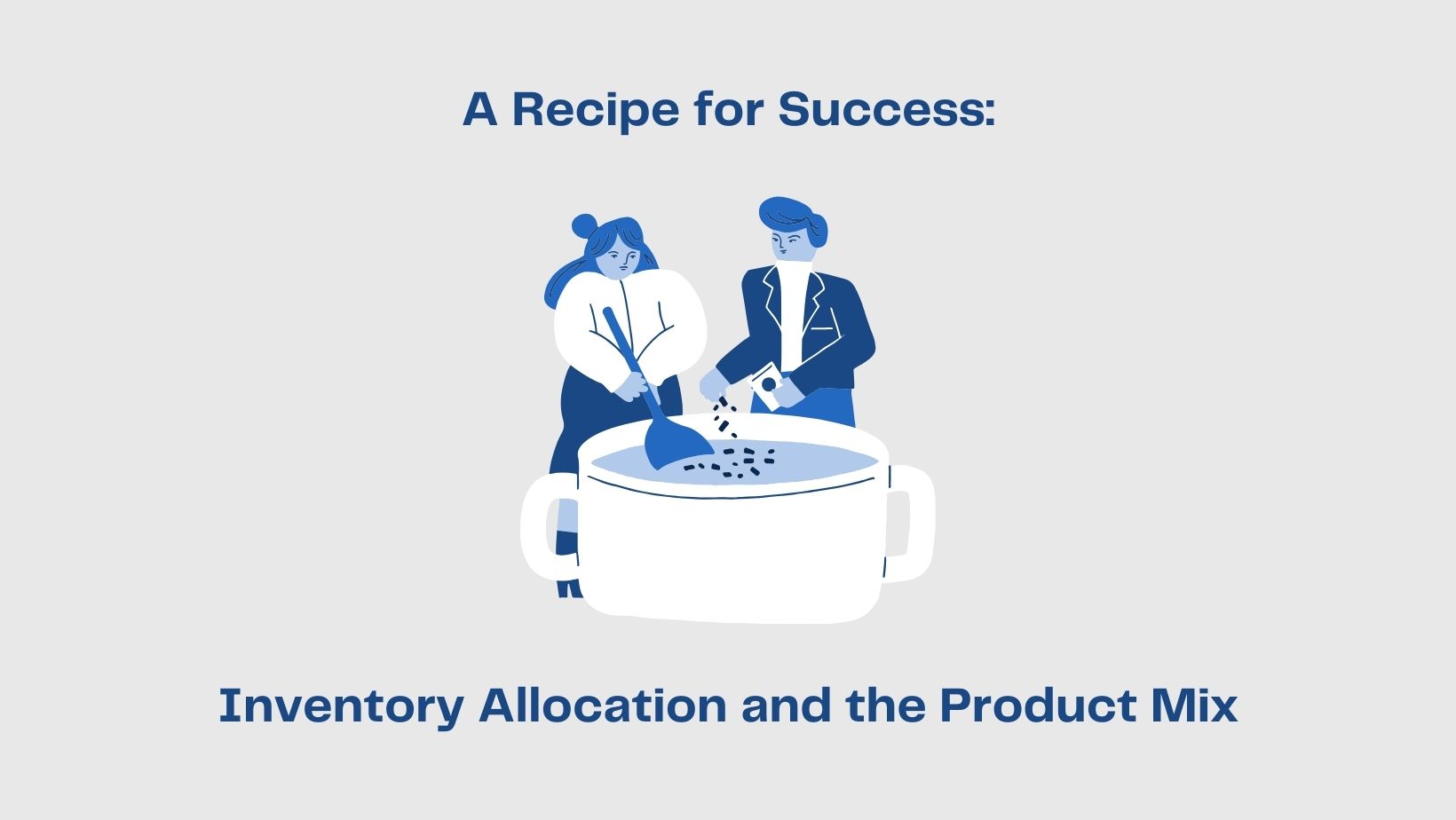By Lennon Barrow, Business Analyst Intern at Enhanced Retail Solutions LLC
On today’s retail menu, we are exploring a recipe for success. Essentially, it boils down to portion-control. Just as a chef controls the portions of each ingredient in a recipe to ensure that each dish is consistent and satisfying, retailers must allocate their inventory to meet customer orders and demands. Inventory allocation is a crucial aspect of inventory management for retailers. It ensures that the right “portions” of products are available for customers, preventing situations where customers are left unsatisfied due to stockouts, and retailers lose sales as a result. Like a chef aims to satisfy diners with a well-prepared meal, retailers strive to satisfy customers by effectively managing their inventory allocation, ensuring that the products customers want are available when they need them.
What is included in the recipe?
In a recipe, various ingredients are required to create a dish. Likewise, a retailer’s product mix (also known as product assortment) consists of different product lines, each representing a distinct category of products they offer. Within each ingredient category in a recipe, there are different options or variations. For instance, if you’re making a pasta dish, you might have choices like spaghetti, penne, or fettuccine. Similarly, in a retailer’s product mix, each product line includes different product items or variations, such as specific brands, models, sizes, and colors. Just as a chef strives to achieve a balance of flavors and ingredients in a recipe, a retailer aims to strike a balance in their product mix to cater to their target market. They carefully choose the right combination of product lines and items to meet customer preferences, maximize sales, and create a harmonious shopping experience.
Who creates the recipe?
In a restaurant, the head chef is responsible for designing the menu, creating recipes, and overseeing the kitchen operations. They make decisions about which dishes to offer, the ingredients to use, and how the dishes should be prepared. Likewise, the corporate assortment planner of a retail chain is responsible for curating the product mix, making decisions about which product lines to carry, which product items to stock, and how the store’s assortment should be presented to customers. The majority of retailers follow this centralized model for creating their “recipe.”
There are several benefits to a centralized assortment. Centralized assortment planning ensures a consistent product mix across all stores in the retail chain. This consistency helps reinforce the brand’s identity and maintain uniform quality and standards, which can be important for retailers with a strong brand image. A centralized assortment also allows for bulk purchasing of products, which can lead to cost savings through economies of scale. Additionally, it streamlines decision-making processes by consolidating assortment planning responsibilities into one central team. This efficiency can lead to quicker and more effective decision-making, reducing delays and ensuring products reach the stores in a timely manner. Furthermore, centralized assortment planners often have access to a broader range of market data and trend analysis tools. They can make data-driven decisions based on comprehensive market research, helping the company stay competitive and adapt to changing consumer preferences.
What is the best recipe?
But what happens if the sous chef is given freedom to create dishes of their own? In a restaurant, the sous chef assists the head chef in preparing the menu and often has input into daily specials. Comparatively, in a decentralized model, individual stores have a certain degree of flexibility in determining their product mix. They have some autonomy to determine the specific product items and variations that will be carried in their store, as well as how these items are presented to customers in their local market. Some retailers follow this decentralized model for creating a more localized “recipe.”
A decentralized assortment has its own unique benefits. Decentralized assortment planning allows stores to tailor their product offerings to the specific preferences and needs of their local customer base. This adaptability is crucial in accommodating regional variations in consumer demand. In addition, local store managers and staff often have a better understanding of the local customer base. They can engage with customers, gather feedback, and make informed decisions about product mix to create a more personalized shopping experience. Plus, individual stores can differentiate themselves from competitors by offering unique and locally relevant products. Localization can provide a competitive advantage, resulting in customer loyalty and increased sales.
Too many cooks in the kitchen?
It’s important to note that the suitability of decentralized assortment planning varies depending on the retailer’s business model, the level of local autonomy, and the specific market conditions. While it offers many advantages, it also requires effective communication and coordination to ensure that overall brand identity and standards are maintained, and it may not be the best approach for retailers with a strong need for brand consistency across all locations. Ultimately, the choice between centralized and decentralized assortment planning should align with the retailer’s strategic objectives and target market.
As the saying goes, too many cooks spoil the broth. In the case of J.C. Penney’s, some people say their “recipe” was a contributing factor to their decline and eventual bankruptcy. J.C. Penney’s decentralized approach allowed individual stores to have significant autonomy in their product assortment, pricing, and promotional strategies. Shoppers couldn’t rely on finding the same products at the same prices, which eroded trust and brand loyalty. Additionally, their decentralized model contributed to inventory mismanagement, with individual stores having significant control over their inventory levels and assortment. This led to overstocking, markdowns, and inefficiencies in inventory turnover. Moreover, decentralization allowed stores to make autonomous decisions about expenses and investments, often without effective oversight. This led to inefficiencies and a lack of cost control, contributing to financial losses.
By the same token, Bed Bath & Beyond ended up in hot water and filed for bankruptcy earlier this year. As with J.C. Penney’s, their decentralized approach led to inconsistent customer experiences, issues with inventory management, and lack of cost control. Although there were many contributing factors for each retail giant, it is safe to say their “recipes” went awry. These examples highlight the importance of effective communication and coordination across stores, as well as striking a balance between centralization and decentralization.
So, which recipe is right for me?
To summarize, the recipe for success can look different, depending on a retailer’s strategic goals. Inventory allocation can be likened to portion-control, whereas the product mix is the retailer’s recipe. Many retailers opt for a centralized assortment planning method, where the head chef, or corporate assortment planner, determines the product mix for all of the retailer’s individual stores. On the other hand, a decentralized assortment planning method allows for localization, as the sous chef, or store manager, can tailor the product mix to cater to the preferences of their local target market. Each method comes with its own benefits and challenges. The choice between centralized and decentralized assortment planning depends on the retailer’s business model, target market, and overall strategy. Regardless of the recipe they choose, effective inventory planning and management are essential for retailers to bring home the bacon.


Comments are closed